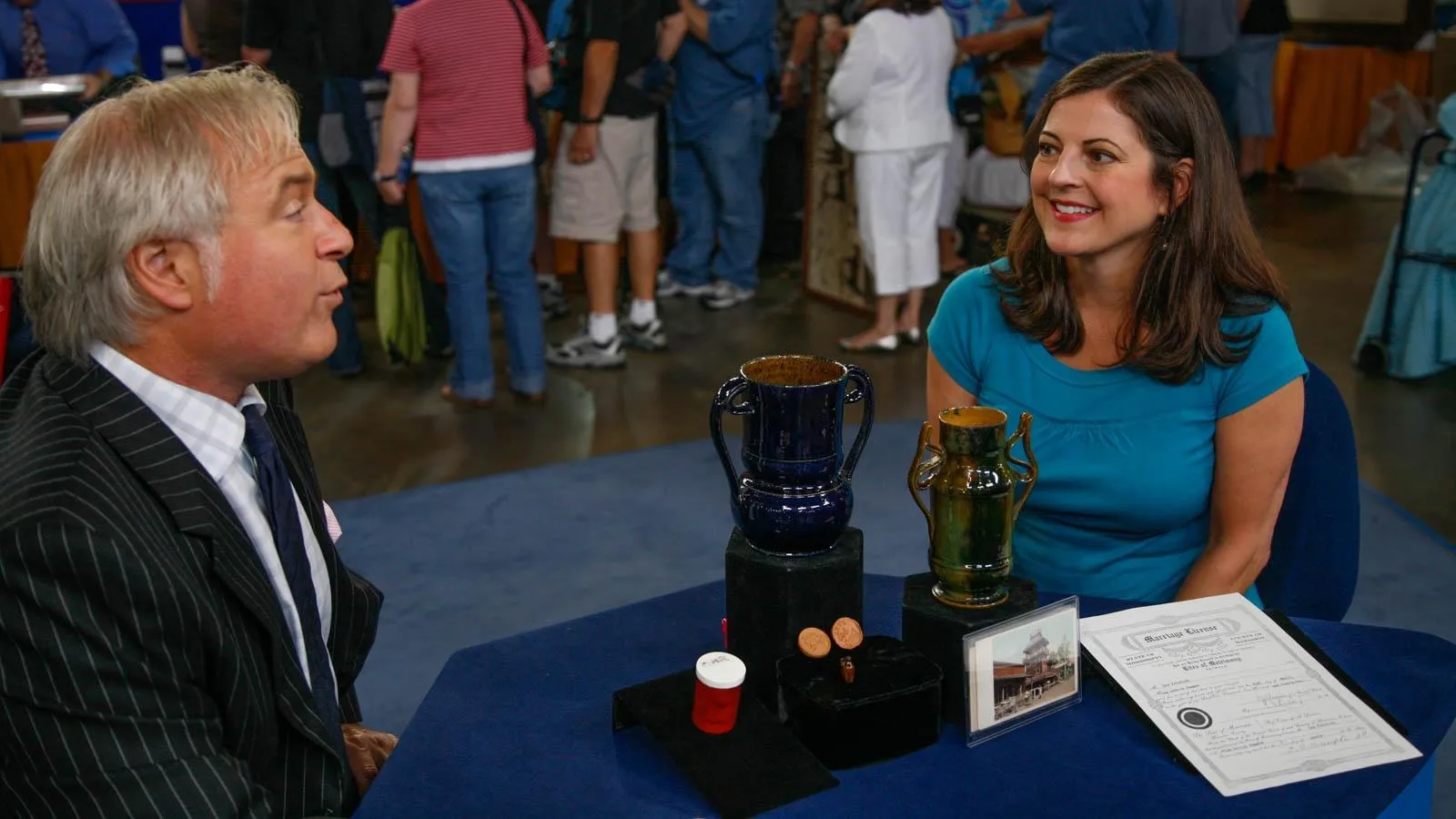GUEST: Well, it's been in the cabinet for many years, and my mother didn't know a whole lot about it once she passed it on to me. And her mother always told her that it was great-great-grandmother's, all passed down through the, through the years to her, in her family.
APPRAISER: Well, it's not unusual for the family history of something to get lost. If you do know the family history of something, it's good to kind of put that inside it. Write out who owned it and when, you know.
GUEST: True.
APPRAISER: What you've got is a good example of what we call mocha ware. Now, mocha ware is a form of decorating earthenware that dates from about 200 years ago. Uh, they started making it, probably, in the 1790s.
GUEST: Oh!
APPRAISER: And then they made it through until about the time Queen Victoria comes to the throne, in the late 1830s. And it's particularly popular in the United States, and it always was. In the last, I would say, half-century, it's been especially popular, because people who collect American folk art are often drawn to mocha ware, and it's widely reproduced for that reason.
GUEST: Oh.
APPRAISER: But you don't see very many early, authentic examples. It's made of a material called creamware. You can see the natural color, even though it's stained.
GUEST: Mm-hmm.
APPRAISER: It's cream-colored earthenware. But this is colored slip. Now, slip is clay in liquid suspension. If you make a kind of liquid out of clay, and you put it onto the surface and comb it around...
GUEST: Oh, okay!
APPRAISER: ...you can make this kind of effect, which is a marbleizing, you could say. And when it was first done, it was sometimes called surface agateware, 'cause it's kind of meant to look a little like a hard stone, like an agate, with that rich veining in it. This one was probably made about 1800.
GUEST: Oh, okay.
APPRAISER: Uh, so it's got a lot of age to it.
GUEST: Huh.
APPRAISER: This staining and all this color and all that can be nicely restored.
GUEST: Oh, it can? Okay.
APPRAISER: It's, it's mostly dirt...
GUEST: I was wondering about that.
APPRAISER: ...that can be-- it's a bleaching process that a professional can do, so the condition overall is pretty good. And I spoke with a couple of my colleagues who have sold mocha ware more regularly in auctions of Americana. Today, if it came to auction, it's going to bring, we think, at least $4,000.
GUEST: (gasps): Oh, four...? Oh, my goodness!
APPRAISER: And, and maybe as much as $6,000.
GUEST: (laughing): Goodness gracious.
APPRAISER: Yeah.
GUEST: My mother will be shocked. She may be wantin’ to take it back. (laughing)
APPRAISER: Well, it's too late for that.











